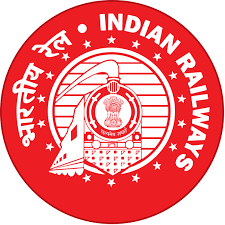RRB JE - CIVIL Tech Complete Batch | Tamil | Online Live Class by Adda 247
Starts: 20-Nov-2024
Seats: 500
Timings: 10:00 AM - 09:00 PM

- Get Access To The Top Expert Faculties Of India For Best PreparationExpert Faculties
- Engaging Interactive Classes For Best Understanding From AnywhereInteractive Classes
- Get Recorded Sessions Of Every Live Class So That Learning Never StopsRecorded Videos
- Get Personalized Attention For Your Doubts With Limited Batch SizeLimited Batch Size
- Access to Structured Classes in Live & Recorded Form
- Doubt Solving on app, Telegram Groups & In Person at Offline Centers
- Interactive classes, Handouts and Class Notes
- Seminar & Topper Talks at Offline Centers
- In-Person Counseling, Physical Support Helpdesk at Offline Centers
- Planner, Previous Year Papers & Preparation Tips on Email regularly
 RRB JE Civil Engineering
RRB JE Civil Engineering
This Course Includes
140 Hrs Online Live Classes
1 E-Books
Faculty Profile

 Play Demo
Play Demo- Multiple Years of Experience
- 4 years of Experience in Technical Teaching field 5 Years of Experience in Teaching - Competitive Exams Mentored 1000+ students through online classes Appeared in TNPSC AE, JDO, RRB & SSC JE RRB JE

 Play Demo
Play Demo- Multiple Years of Experience
- M.Tech - Environmental Engineering 11 years of Experience in Technical Teaching field 6 Years of Experience in Teaching - Competitive Exams
Overview
RRB JE தேர்வின் அறிவிப்பானது 2019 ஆம் ஆண்டு அறிவிக்கப்பட்டது, இதில் முதல் நிலை தேர்வு 2020லும் இரண்டாம் நிலை தேர்வு 2021லும் நடைபெற்றது. இந்த ஆண்டு ஜூலை மாதம் அறிவிப்பானது வெளியிடப்படது. 4 ஆண்டுகள் பிறகு அறிவிப்பு வெளிககிறதால், 652 காலி பணி இடங்களுடன் வெளியானது (சென்னை மண்டலம்). தேர்விற்கான விண்ணப்பம் 30.07.2024 முதல் 29.08.2024 வரை நடந்து நிறைவுபெற்றது. இந்த தேர்வு இரு கட்டங்களாக நடைபெறுகின்றது, முதல் கட்டமாக CBT-1 மற்றும் இரண்டாம் கட்டமாக CBT-2 நடைபெறுகிறது.
The notification of RRB JE exam 2019 was announced in which the first stage exam was held in 2020 and the second stage exam was held in 2021. The notification was released in July this year. After 4 years the notification comes out with 652 vacancies (CHENNAI ZONE). Application for the examination was completed from 30.07.2024 to 29.08.2024. This examination is conducted in two phases, the first phase is CBT-1 and the second phase is CBT-2.
This Package Includes
- 140+ நேரலை வகுப்புகள்
- 100% Syllabus Coverage
- Recorded videos
- Doubts Session available
Study Plan
Check the study plan here
Subjects Covered
- Engineering Mechanics
- Building Materials
- Construction of Substructure
- Construction of Superstructure
- Building Finishes
- Building Maintenance
- Building Drawing
- Concrete Technology
- Surveying
- Computer-Aided Design
- Geo-Technical Engineering
- Hydraulics
- Irrigation Engineering
- Mechanics of Structures
- Theory of Structures
- Design of Concrete Structures
- Design of Steel Structures
- Transportation Engineering
- Highway Engineering
- Environmental Engineering
- Advanced Construction Techniques and Equipment
- Estimating and Costing
- Contracts and Accounts
Exam Pattern
1st Stage CBT - 1

*Negative Marking - ⅓
Total Questions - 100
Total Marks - 100
Duration of CBT-1 Exam- 90 minutes
2nd Stage CBT - 2

*Negative Marking = ⅓
Total Questions - 150
Total Marks - 150
Duration of CBT-1 Exam- 120 minutes
RRB JE 2024 SELECTION PROCESS:
RRB JE EXAM AGE LIMIT:

NOTE: Covid-19 considered age relaxation given upto 3 years
Syllabus
RRB JE CIVIL SYLLABUS:
Subject | Syllabus | No of Hours |
Engineering Mechanics | Force (resolution of force, moment of force, force system, composition of forces), Equilibrium, Friction, Centroid and Center of gravity, Simple machines. Building components (substructure, superstructure), type of structure (load bearing, framed and composite structures). | 3 |
Building Materials | Masonry materials (stones, bricks, and mortars), Timber, and miscellaneous materials (glass, plastic, fiber, aluminum steel, galvanized iron, bitumen, PVC, CPVC, and PPF). | 17
|
Construction of Substructure | Job layout, earthwork, foundation (types, dewatering, cofferdams, bearing capacity). | |
Construction of Superstructure | Stone masonry, brick masonry, Hollow concrete block masonry, composite masonry, cavity wall, doors and windows, vertical communication (stairs, lifts, escalators), scaffolding, and shoring. | |
Building Finishes | Floors (finishes, process of laying), walls (plastering, pointing, painting), and roofs (roofing materials including RCC). | |
Building Maintenance | Cracks (causes, type, repairs- grouting, uniting, epoxy, etc.), settlement (causes and remedial measures), and re-baring techniques. | |
Concrete Technology | Properties of various types/grades of cement, properties of coarse and fine aggregates, properties of concrete (water-cement ratio, properties of fresh and hardened concrete), Concrete mix design, testing of concrete, quality control of concrete (batching, formwork). | |
Advanced Construction Techniques and Equipment | Fibers and plastics, artificial timber, advanced concreting methods, formwork, prefabricated construction, soil reinforcing techniques, hoisting and conveying equipment, earth-moving machinery, concrete mixers, stone crushers, pile driving equipment. | |
Surveying
| Types of survey, chain and cross staff survey, compass survey, leveling, contouring, area and volume measurements, plane table survey, theodolite survey, Tacheometric survey, curves, advanced survey equipment, aerial survey, and remote sensing. | 8
|
Computer-Aided Design
| CAD Software (AutoCAD, Auto Civil, 3D Max, etc.), CAD commands, generation of the plan, elevation, section, site plan, area statement, and 3D view. | 3
|
Building Drawing
|
Conventions (type of lines, symbols), planning of building (principles of planning for residential and public buildings, rules and bylaws), drawings (plan, elevation, section, site plan, location plan, foundation plan, working drawing), perspective drawing. | |
Geo-Technical Engineering
| Application of Geo-Technical Engineering in design, physical properties of soil, permeability of soil and seepage analysis, shear strength of soil, bearing capacity of soil, compaction and stabilization of soil, site investigation, and subsoil exploration. | 13
|
Hydraulics
| Properties of fluid, hydrostatic pressure, measurement of liquid pressure in pipes, fundamentals of fluid flow, flow of liquid through pipes, flow through open channels, flow measuring devices, and hydraulic machines. | 18
|
Irrigation Engineering
| Hydrology, investigation, and reservoir planning, percolation tanks, diversion headworks. | 9
|
Mechanics of Structures
| Stress and strain, shear force and bending moment, moment of inertia, stresses in beams, analysis of trusses, strain energy. | 9
|
Theory of Structures
| Direct and bending stresses, slope and deflection, fixed beam, continuous beam, moment distribution method, columns. | 5
|
Design of Concrete Structures
| Working Stress method, Limit State method, analysis, and design of singly reinforced and doubly reinforced sections, shear, bond and development length, analysis and design of T Beam, slab, axially loaded column, and footings. | 15
|
Design of Steel Structures
| Types of sections, grades of steel, strength characteristics, IS Code, Connections, Design of tension and compression members, steel roof truss, beams, and column bases. | 8
|
Transportation Engineering
| Railway Engineering (alignment and gauges, permanent way, railway track geometrics, branching of tracks, stations and yards, track maintenance), Bridge engg, Tunnel engineering. | 10
|
Highway Engineering
| Road Engineering, investigation for road projects, geometric design of highways, construction of road pavements and materials, traffic engineering, hill roads, drainage of roads, maintenance, and repair of roads. | 10
|
Environmental Engineering | Environmental pollution and control, public water supply, domestic sewage, solid waste management, environmental sanitation, and plumbing. | 13
|
Estimating and Costing
| Types of estimates (approximate, detailed), mode of measurements, and rate analysis. | 4
|
Contracts and Accounts
| Types of engineering contracts, Tender and tender documents, payment, and specifications. | 2 |





 140 Hrs
140 Hrs 1
1





